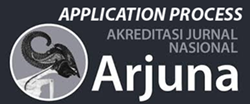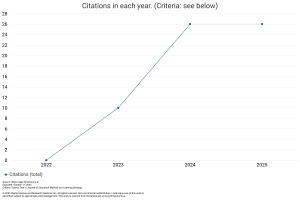Investigating Interactive Learning's Effects on Guard Duty Course Learning Outcomes for Cadet Students
DOI:
https://doi.org/10.59653/jemls.v1i03.196Keywords:
Interactive Learning, Guard Duty Courses, Cadet StudentsAbstract
The learning results of cadet students taking the guard duty course are examined in this study to determine the effectiveness of interactive learning. Results of post-test data analysis using a sample of 46 students and the pre-experiment approach revealed a significant improvement in learning outcome scores. The median score grew from 80.3 to 82.5, while the mean score went from 80.5 on the pretest to 83.3 on the posttest. Also noticeably rising were the minimum and maximum scores. This research suggests that interactive learning enhances students' comprehension and knowledge. The constructivism learning theory, which emphasizes the value of active involvement in learning, is in accord with the ideas of this advancement. However, it is also essential to consider other elements like the caliber and drive of the instructors. The findings of this study offer a framework for creating more interactive and participatory learning processes in educational situations.
Downloads
References
Arghode, V., Brieger, E. W., & McLean, G. N. (2017). Adult learning theories: Implications for online instruction. European Journal of Training and Development, 41(7), 593–609. https://doi.org/10.1108/EJTD-02-2017-0014
Bloshchynskyi, I. (2017). Cadets' practical training was enhanced at the National Academy of the State Border Guard Service of Ukraine named after Bohdan Khmelnytskyi.
Boaler, J. (1993). Encouraging the transfer of 'school' mathematics to the 'real world' through integrating process and content, context and culture. Educational Studies in Mathematics, 25(4), 341–373. https://doi.org/10.1007/BF01273906
Garcia, E. (2016). The need to address non-cognitive skills in the education policy agenda. In Non-cognitive skills and factors in educational attainment (pp. 31–64). Brill.
Lester, J. C., Stone, B. A., & Stelling, G. D. (1999). Lifelike pedagogical agents for mixed-initiative problem solving in constructivist learning environments. User Modeling and User-Adapted Interaction, 9, 1–44.
Mahmoudi, S., Jafari, E., Nasrabadi, H. A., & Liaghatdar, M. J. (2012). Holistic education: An approach for 21 century. International Education Studies, 5(2), 178–186.
Malik, D. & Mudiyanto. (2020). Pengaruh Pengembangan Kurikulum dan Pembentukan Karakter Taruna/i Terhadap Kualitas Pendidikan di Program Diploma Pelayaran. Jurnal Aplikasi Pelayaran Dan Kepelabuhanan, 11(1), 14–24. https://doi.org/10.30649/japk.v11i1.60
Muhammad, R. M. (2013). Pendidikan Karakter “Maritim” Mahasiswa Unhas Dalam Pembangunan Peradaban Dan Kebudayaan Dari Perspektif Sosiologi. SOCIUS : Jurnal Sosiologi, 13(1), Article 1.
Soroka, O., Kalaur, S., & Balendr, A. (2019). Diagnostics of Leadership Qualities of Specialists of “Man–Man” Type of Professions in Military and Civil Higher Education Institutions: Psychological and Pedagogical Approach. Revista Romaneasca Pentru Educatie Multidimensionala, 264–277. https://doi.org/10.18662/rrem/189
Swan, K. (2005). A constructivist model for thinking about learning online. Elements of Quality Online Education: Engaging Communities, 6, 13–31.
Van Bommel, M., Kwakman, K., & Boshuizen, H. P. A. (2012). Experiences of social work students with learning theoretical knowledge in constructivist higher vocational education: A qualitative exploration. Journal of Vocational Education & Training, 64(4), 529–542. https://doi.org/10.1080/13636820.2012.727857
Vaughan, K. (2017). The role of apprenticeship in the cultivation of soft skills and dispositions. Journal of Vocational Education & Training, 69(4), 540–557. https://doi.org/10.1080/13636820.2017.1326516
Downloads
Published
How to Cite
Issue
Section
License
Copyright (c) 2023 Makmur Syam, Irfan Fauzon

This work is licensed under a Creative Commons Attribution-ShareAlike 4.0 International License.
Authors who publish with this journal agree to the following terms:
- Authors retain copyright and grant the journal right of first publication with the work simultaneously licensed under a Creative Commons Attribution-ShareAlike that allows others to share the work with an acknowledgement of the work's authorship and initial publication in this journal.
- Authors are able to enter into separate, additional contractual arrangements for the non-exclusive distribution of the journal's published version of the work (e.g., post it to an institutional repository or publish it in a book), with an acknowledgement of its initial publication in this journal.
- Authors are permitted and encouraged to post their work online (e.g., in institutional repositories or on their website) prior to and during the submission process, as it can lead to productive exchanges, as well as earlier and greater citation of published work (See The Effect of Open Access).
























